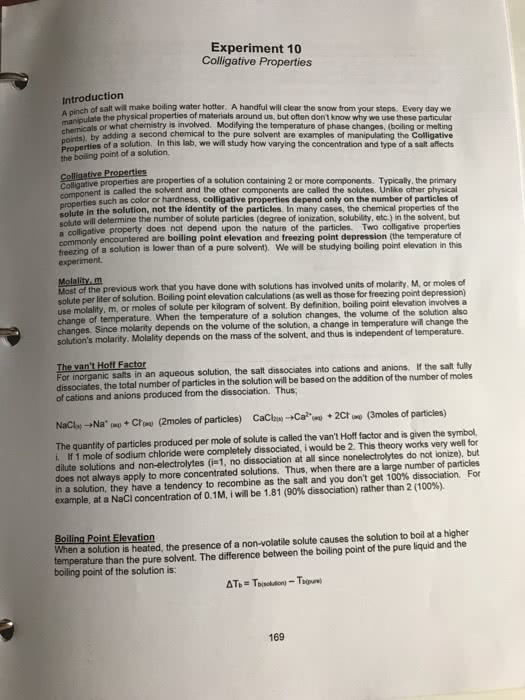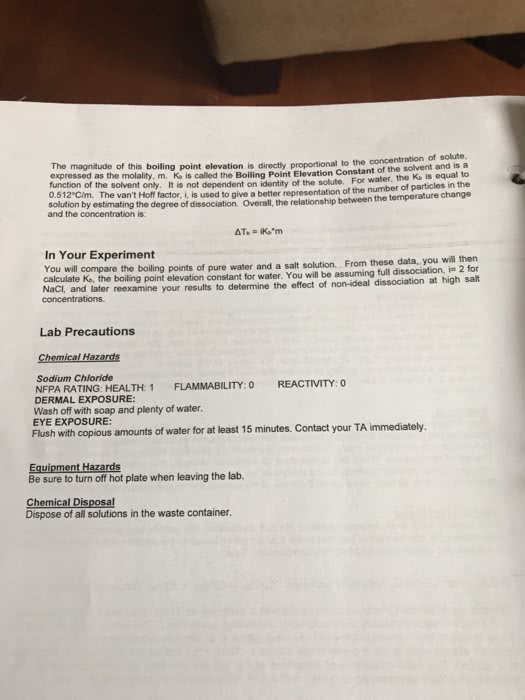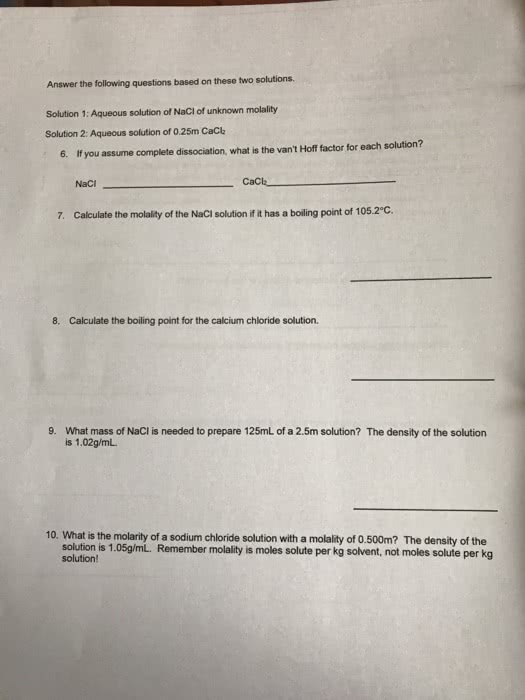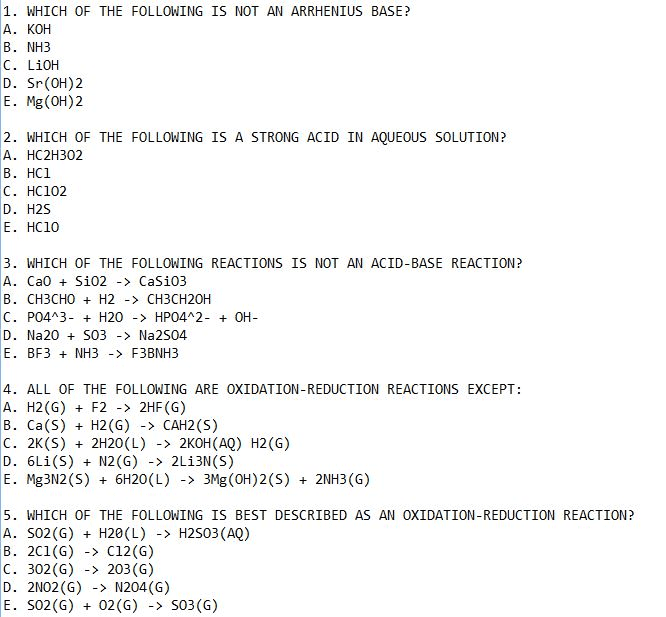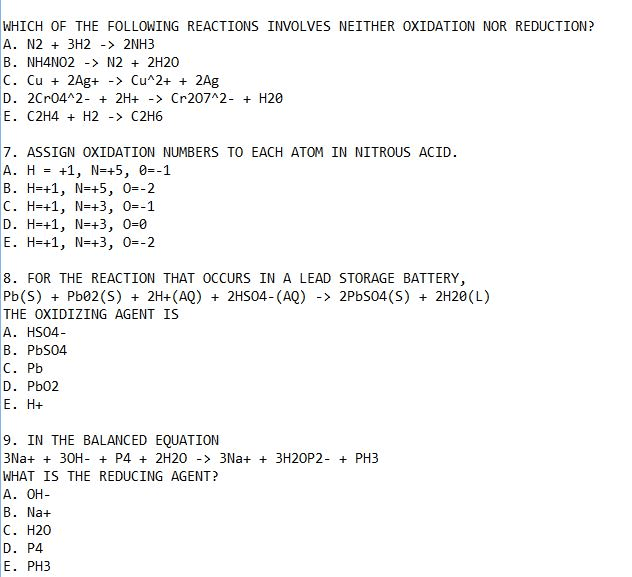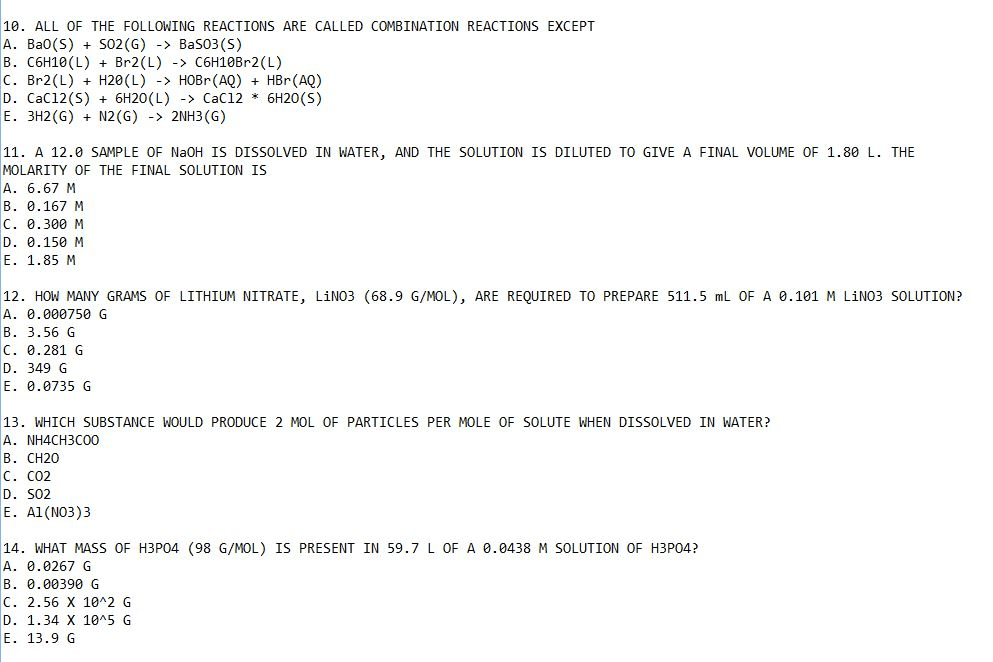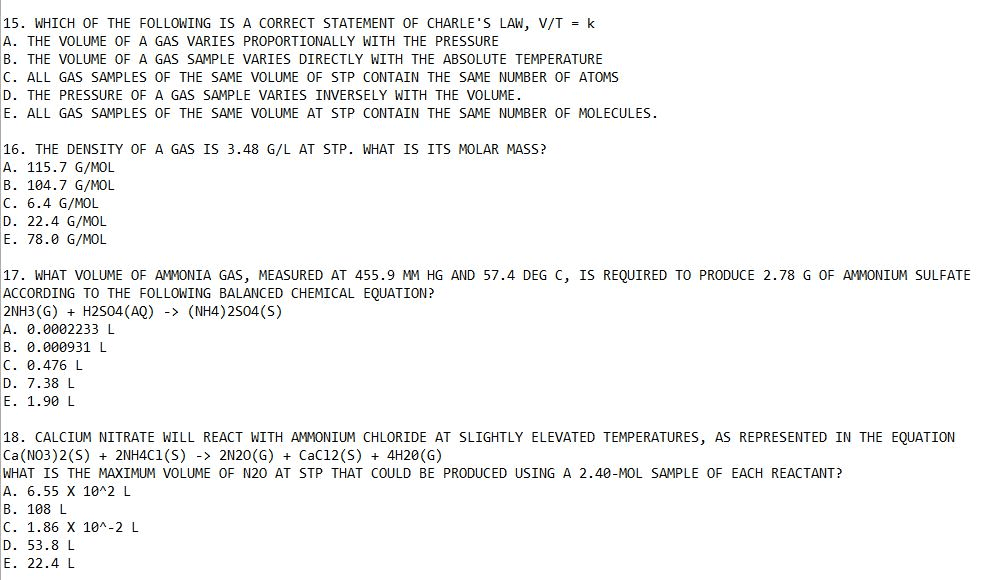CH 101 Lecture Notes - Lecture 17: Barium Hydroxide, Barium Chloride, Electrolyte
34 views2 pages
24 Mar 2016
School
Department
Course
Professor
Document Summary
43. 8 ml of 0. 107 m hcl is needed to neutralize 37. 6 ml of ba(oh)2 solution. 2hcl (aq) + ba(oh)2 (aq) > bacl2 (aq) + 2h2o (aq) 0. 0438 l hcl x (0. 107 mol hcl / 1l) x (1 mol ba(oh)2 / 2 mol hcl) = 0. 00234 mol. 0. 00234 mol ba(oh)2 / 0. 0376 l baoh2 = m ba(oh)2. There are attractive forces between the solute particles holding them together. There are also attractive forces between the solvent molecules. When we mix the solute with the solvent, there are attractive forces between the solute particles and the solvent molecules. If the attractions between the solute and solvent are strong enough, the solute will dissolve. Materials that dissolve in water to form a solution that will conduct electricity are called electrolytes. Materials that dissolve in water to form a solution that will not conduct electricity are called nonelectrolytes. To conduct electricity, a material must have charged particles that are able to flow.
Get access
Grade+
$40 USD/m
Billed monthly

Homework Help
Study Guides
Textbook Solutions
Class Notes
Textbook Notes
Booster Class
10 Verified Answers
Class+
$30 USD/m
Billed monthly

Homework Help
Study Guides
Textbook Solutions
Class Notes
Textbook Notes
Booster Class
7 Verified Answers
